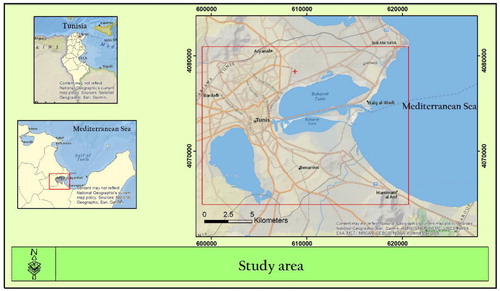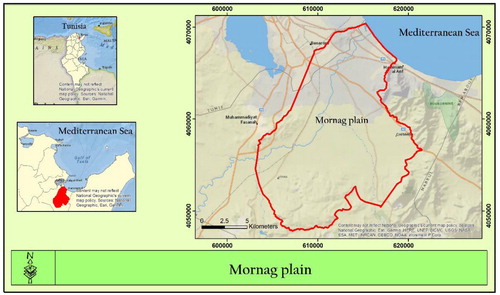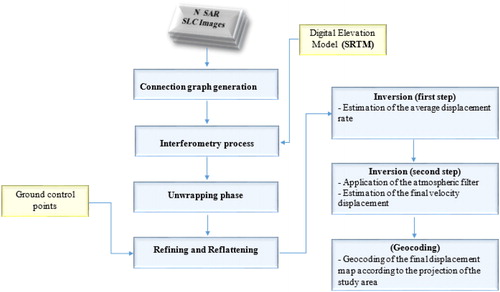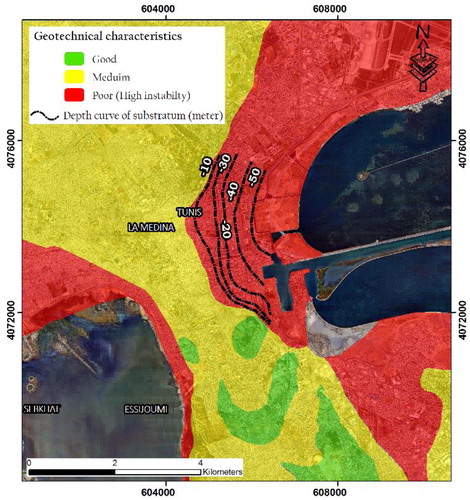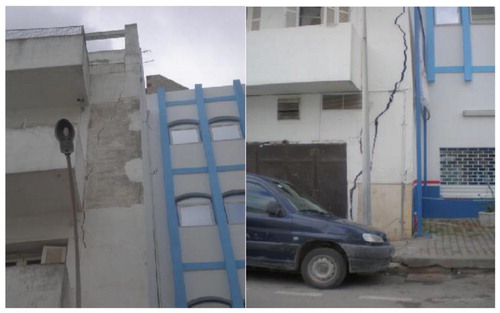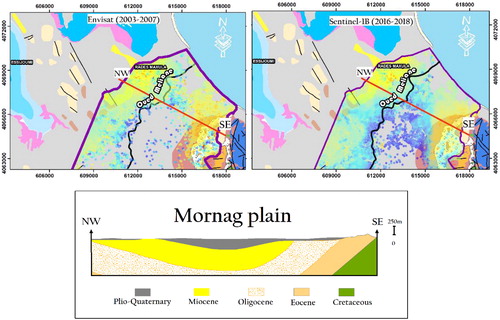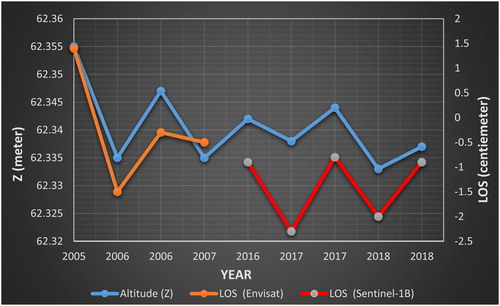Figures & data
Figure 2. Assembly of the geological maps (1:50.000) of Ariana, Marsa, Tunis and La Goulette (Source: modified from ONM, Ferchichi et al. 2017).
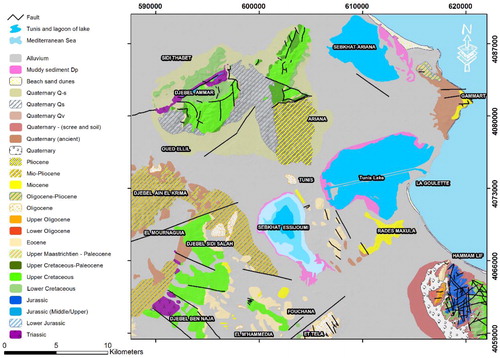
Figure 4. Geological map (1:50.000) showing the main outcrops of the Oligo-Quaternary in Mornag plain (Source: La Goulette and Tunis).

Figure 5. Variation of thicknesses of the Quaternary sediments (compressible layers) in Mornag plain (Farhat 2011). Source: Author
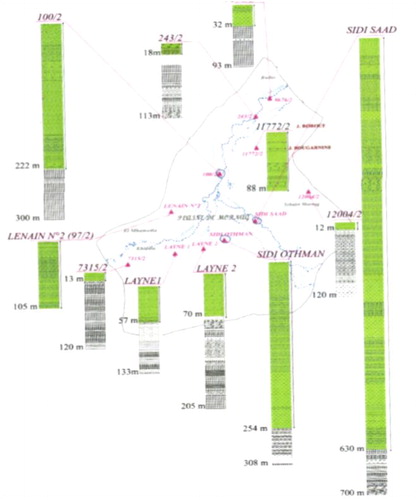
Table 1. Characteristics of Envisat ASAR and Sentinel 1B SAR data used for the analysed periods (2003–2007) and (2016–2018).
Figure 7. Connection graph showing perpendicular and temporal baselines of SLC pairs relative to the master image: (A) Envisat ASAR (master: 24 May 2005); (B) Sentinel 1B (master: 24 December 2017). Source: Author.

Figure 8. Spatial distribution of surface deformations (LOS) in Tunis City (mm/year) obtained from Envisat SBAS analysis (2003–2007). Source: Author.
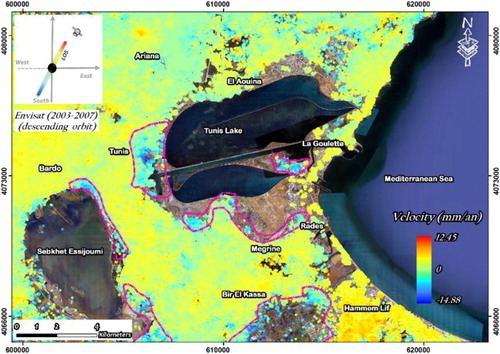
Figure 9. Spatial distribution of surface deformations (LOS) in Tunis City (mm/year) obtained from Sentinel 1B SBAS analysis (2016–2018). Source: Author.
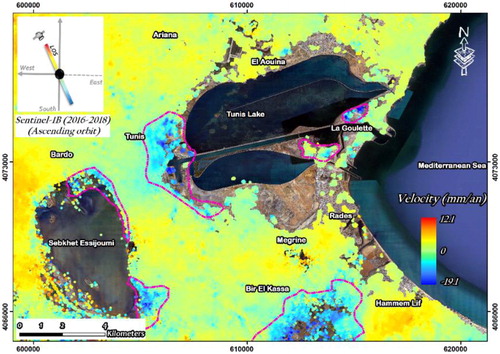
Figure 11. Spatial distribution of thicknesses of the muddy soil in the region of Tunis (Source: Kaaniche 1989), modified.
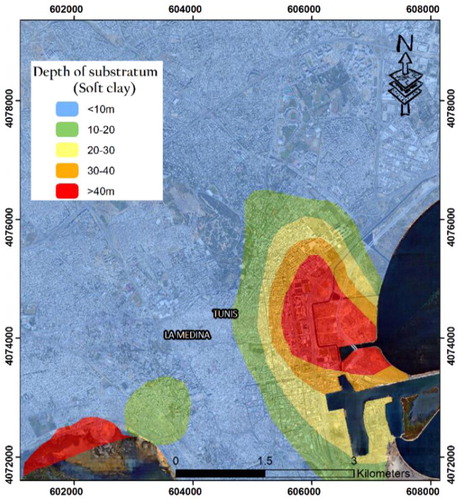
Figure 12. Lithological column (reconstituted from core holes) located in instable area of Tunis City (Source: Klai and Bouassida 2016, modified).

Figure 14. Photo example of a building (currently abandoned) was built in the late 80s, located in front of the old port of Tunis, showing the inclination of this building a few degrees to the East, (Saad Zaghloul Street). Source: Author.
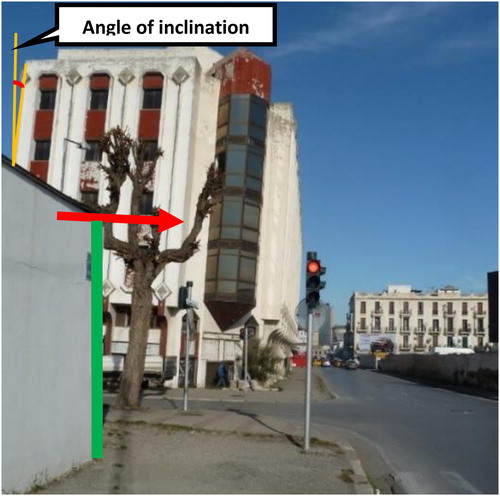
Figure 15. Photo example of an old building, located in Avenue Hedi Nouira, showing the inclination of this building a few degrees to the East. Source: Author.
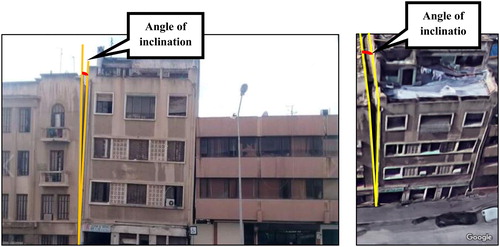
Figure 16. Spatial distribution of surface deformations (LOS) in Mornag plain (mm/year) obtained from Envisat SBAS analysis (2003–2007). Source: Author.

Figure 17. Spatial distribution of surface deformations (LOS) in Mornag plain (mm/year) obtained from Sentinel 1B SBAS analysis (2016–2018). Source: Author.
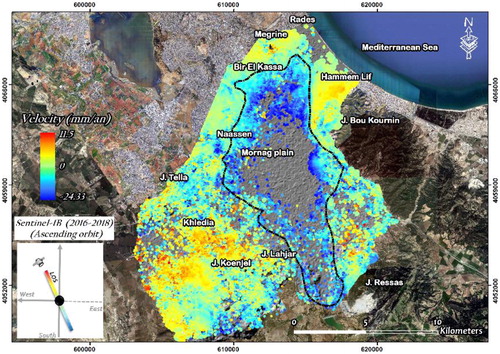
Figure 19. Piezometric level of three wells in Mornag aquifer during the period (1965–2000) (Source: Charef et al. 2012).
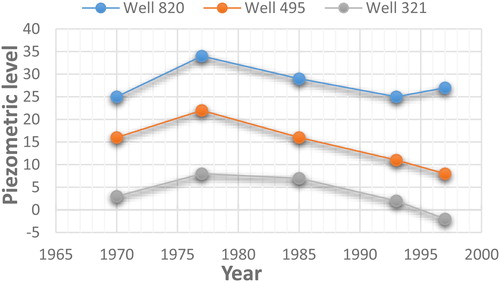
Figure 20. The distribution of some groundwater monitoring wells for both periods (2003–2007) and (2016–2018). Source: Author.
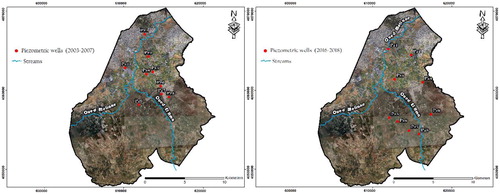
Figure 21. Evolution of piezometric level at selected wells in Mornag plain (2004–2008). Source: Author.
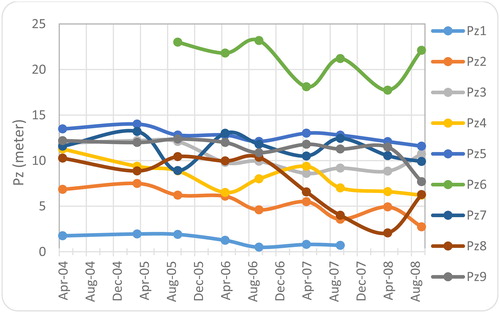
Figure 22. Evolution of piezometric level at selected wells in Mornag plain (2009–2018). Source: Author.
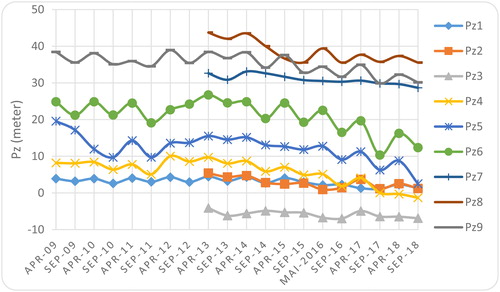
Figure 23. The relationship between deformation time series (LOS) for Envisat SAR data and piezometric levels during (2003–2007) at selected well points (Pz1, Pz2, Pz3, Pz5). Source: Author.
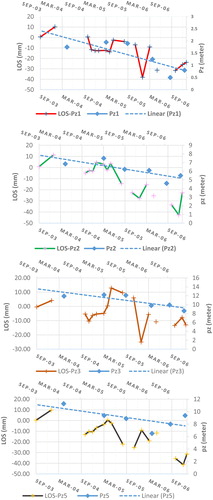
Figure 24. The relationship between deformation time series (LOS) for Sentinel 1B SAR data and piezometric levels during (2016–2018) at selected well points (Pz4, Pz5, Pz6, Pz9). Source: Author.


